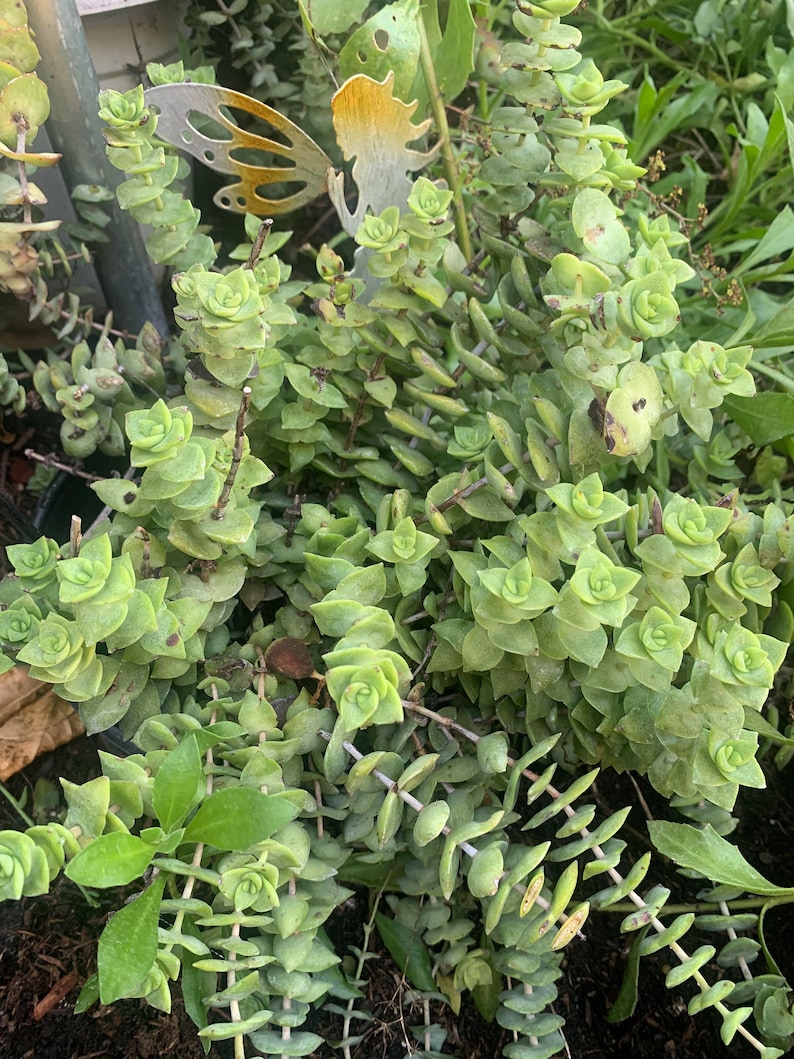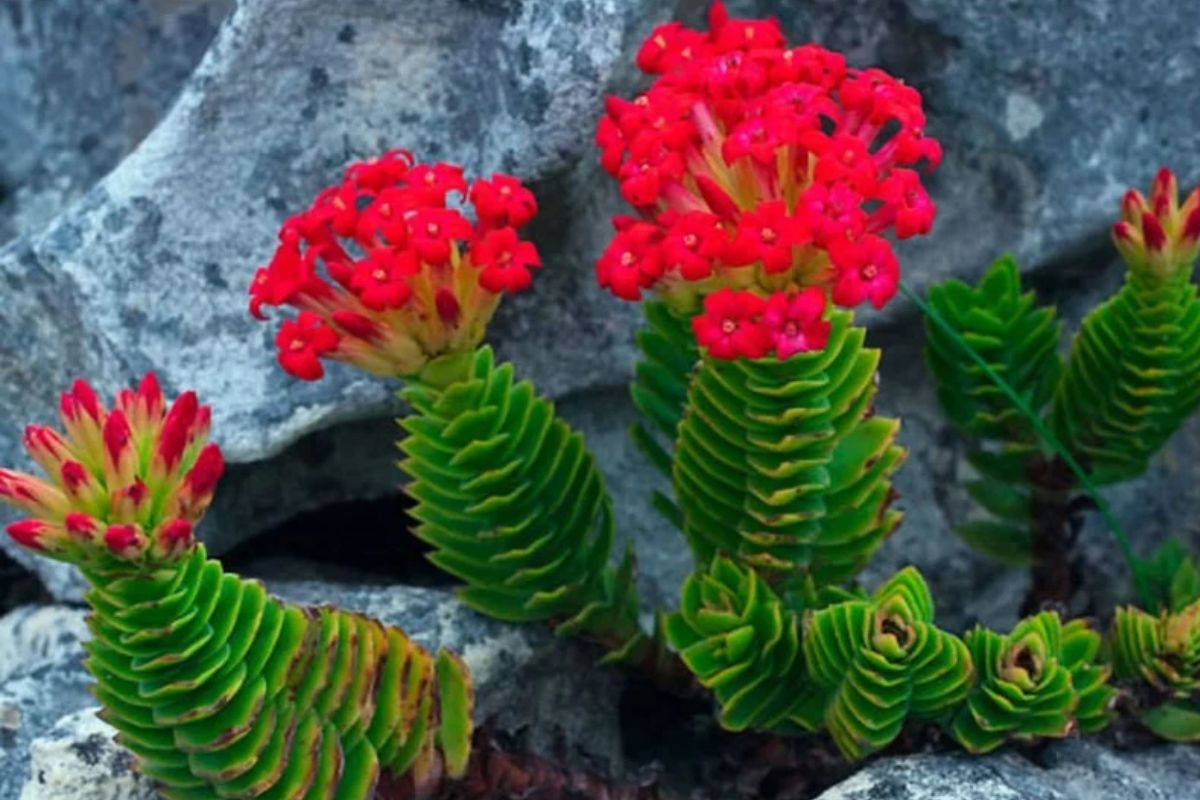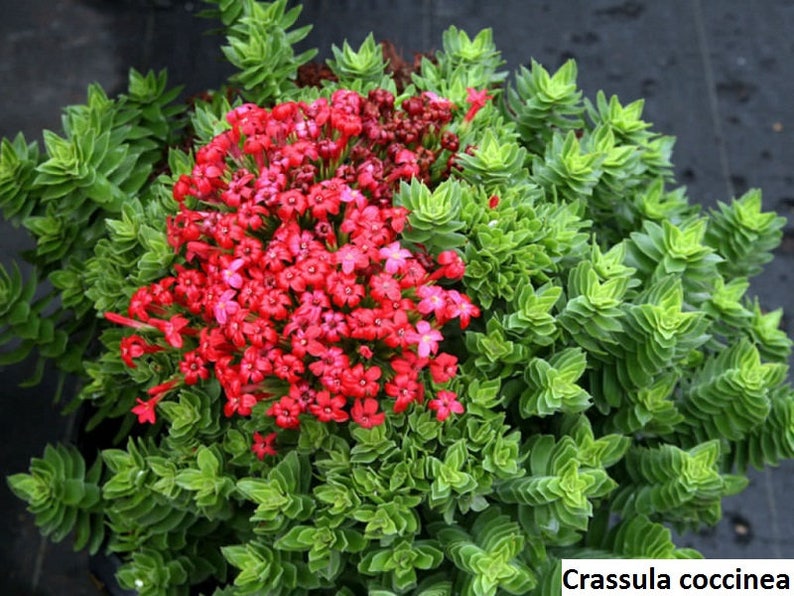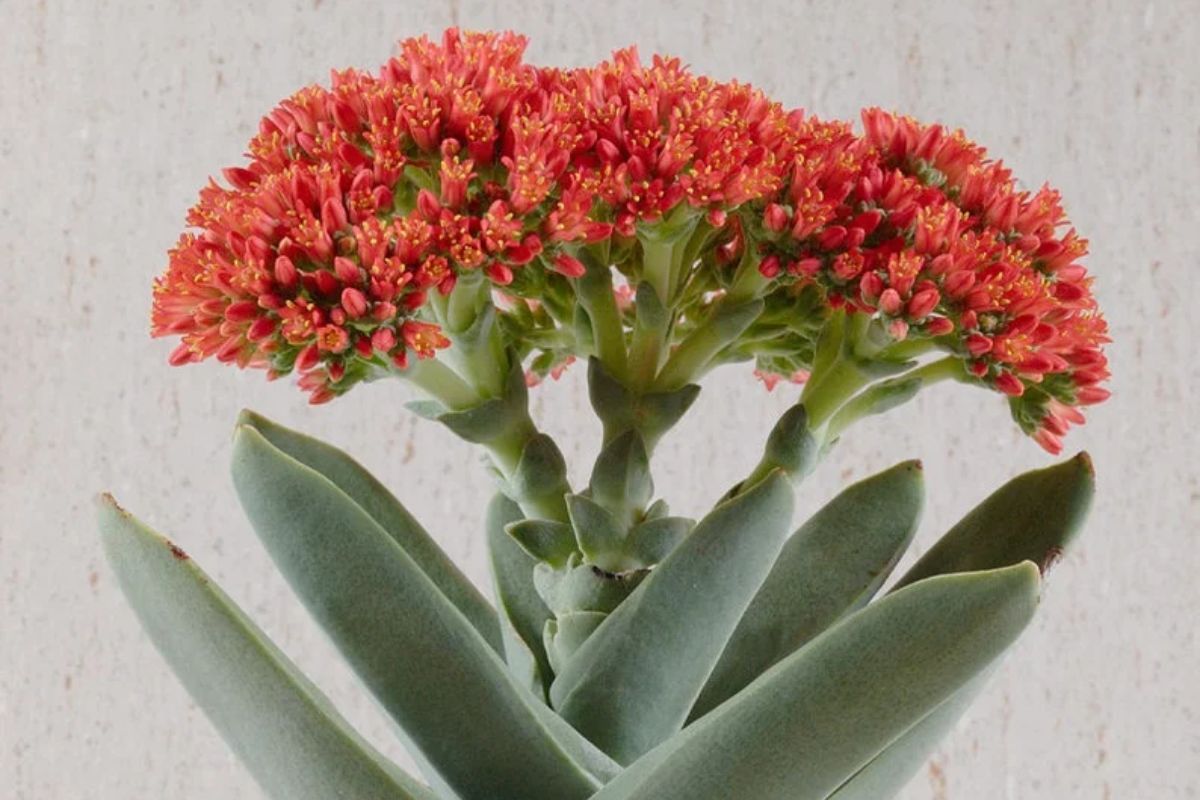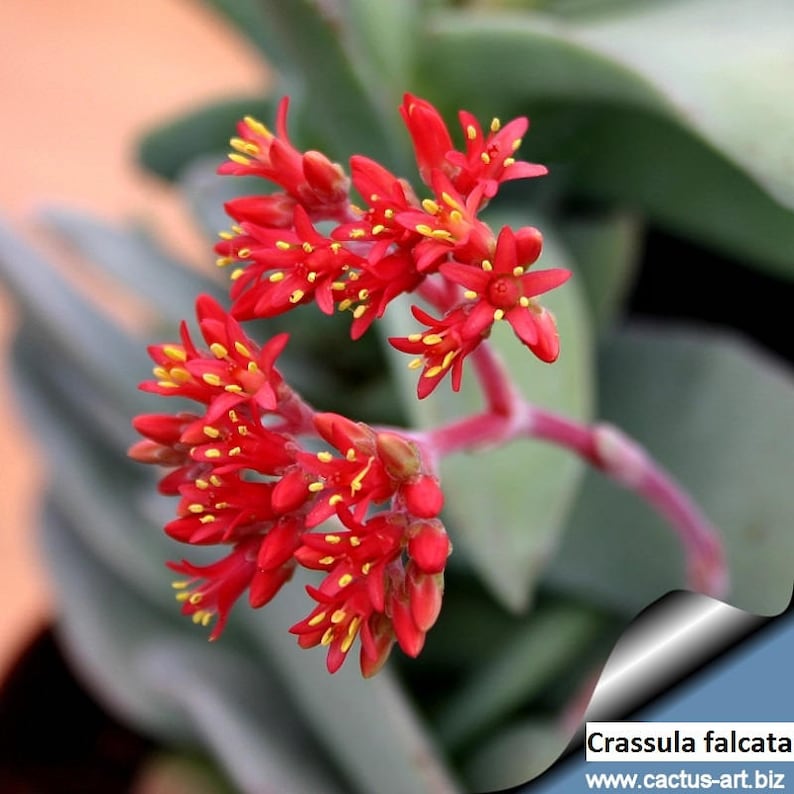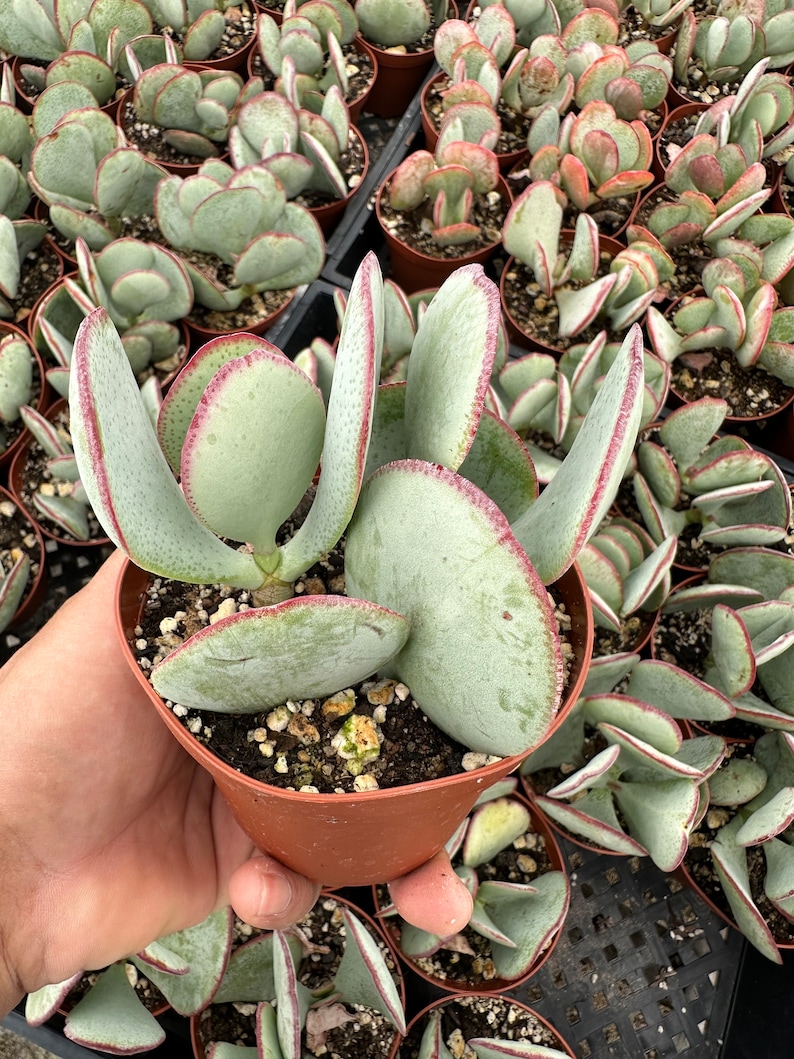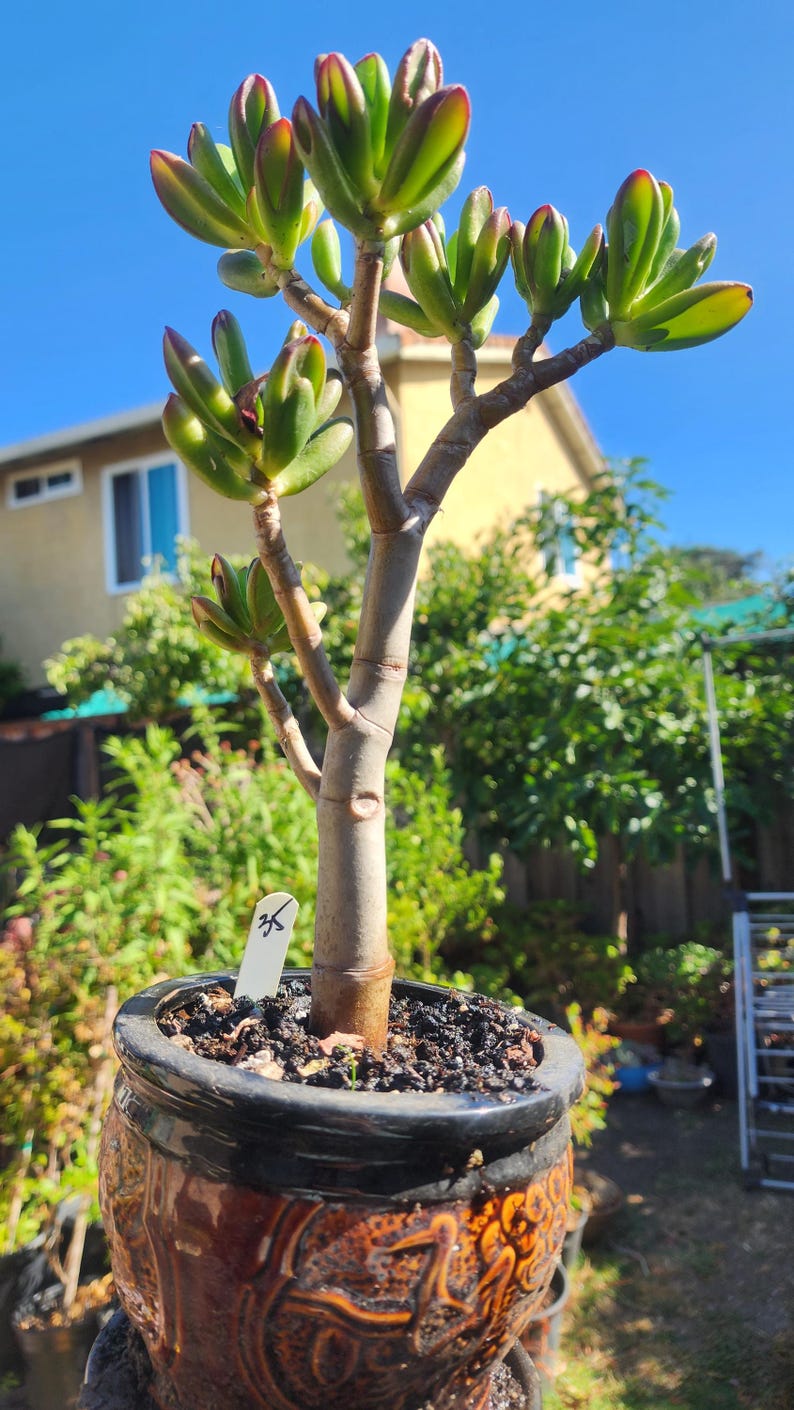Jade plants are popular houseplants that have long been prized for its beauty and healing properties. In ancient China, jade was believed to bring good fortune and longevity.
Today, the jade plant continues to be valued for its aesthetic appeal, durability, and ability to withstand extreme temperatures.
The Jade Plant Crassula Ovata is the most well-known of jade plants, but there are over 1400 types of this succulent.
Jade Plant Types Overview
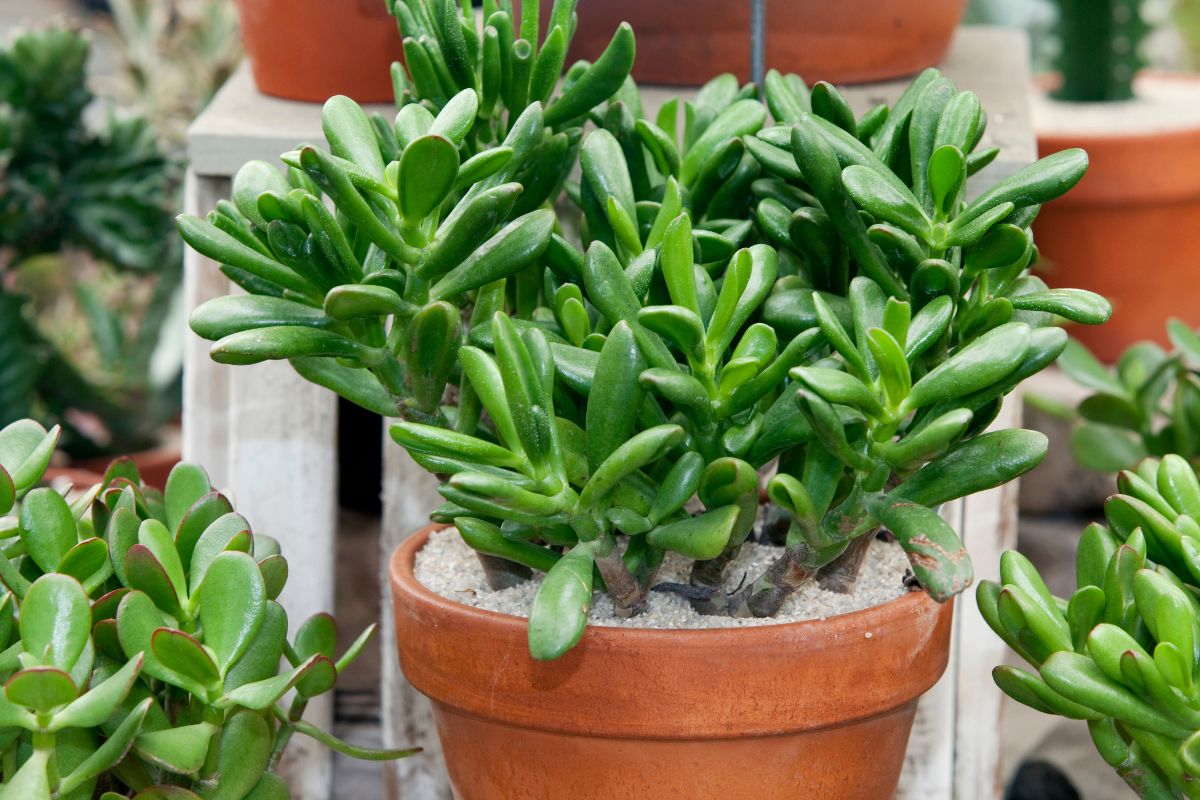
Jade plants are also known as money plants or lucky plants, they are lovely additions to any home garden and they stand out for their ease of care.
Members of the Crassulaceae family, this succulent genus finds its native habitats in South Africa. It can also be found in dryer zones of Mozambique.
When referring to a jade plant, most of us think of the emerald green variety with fleshy leaves.
Foliage, however, can vary in color from lighter to darker shades of green color. Some may be variegated with white or cream edging or feature a silver or bluish tinge.
Jade plants can be cultivated both indoors and outside in specific environmental conditions. They are slow growers.
As evergreen succulents, they need direct sunlight, in a warm and dry environment. Environmental temperatures should not drop below 50°F.
They do not tolerate freezing cold temperatures or frost. To cultivate them in your outside garden, you’ll need to do so in U.S. hardiness zones 10 and 11.
They do well in fertile, well-draining soil and require occasional watering when the soil bed dries out.
Jade plants are toxic, so they need to be out of the reach of your cats and dogs.
17 Popular Types of Jade Plants
With roughly 1400 varieties there are lots of cultivars to choose from.
Here are 17 of the most popular types of jade plants for cultivation by Jade plant enthusiasts and home gardeners.
1. Jade Plant (Crassula Ovata)
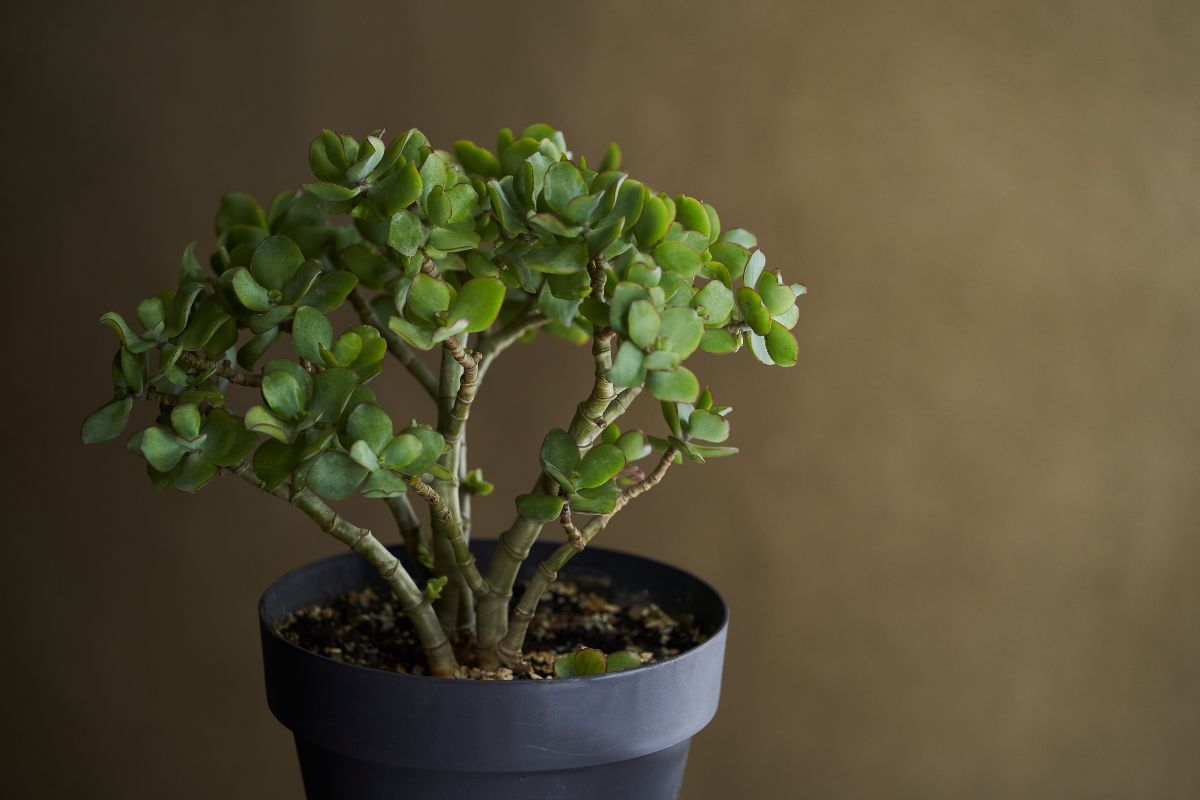
The Crassula Ovata is the most common and well-known jade plant among the popular varieties.
She is queen. She may be known and identifiable but there is nothing common about this plant. The Crassula Ovata is a popular houseplant and a well-loved cultivar thanks to its striking beauty and ease of care.
Originating in arid South Africa and Mozambique, it has been cultivated as a houseplant throughout the last century.
Richly jade green foliage that is abundant and fleshy with stored moisture makes this cultivar the prima donna of jade plants.
The Crassula Ovata can grow between 3 and 6 feet in size even as a houseplant.
If cultivating outdoors, watch out for high humidity, as this plant does better in arid environments.
2. Buttons on a String (Crassula Perforata)

The “Buttons on a String” Jade plant cultivar grows long woody stems featuring green fleshy leaves.
You may find it named the “baby’s necklace” plant, or the “rosary vine” plant. The angular foliage bunches together as if part of a chain.
Some leaves can feature a small hint of red.
This crassula cultivar can grow to reach about 18 inches tall. As a slow grower, the buttons on a string may need as long as 5 to 10 years to reach maturity and as well as its full size.
With the ideal conditions, they will produce small pink or white blossoms in summer.
3. Calico Kitten (Crassula Marginata ‘Variegata’)
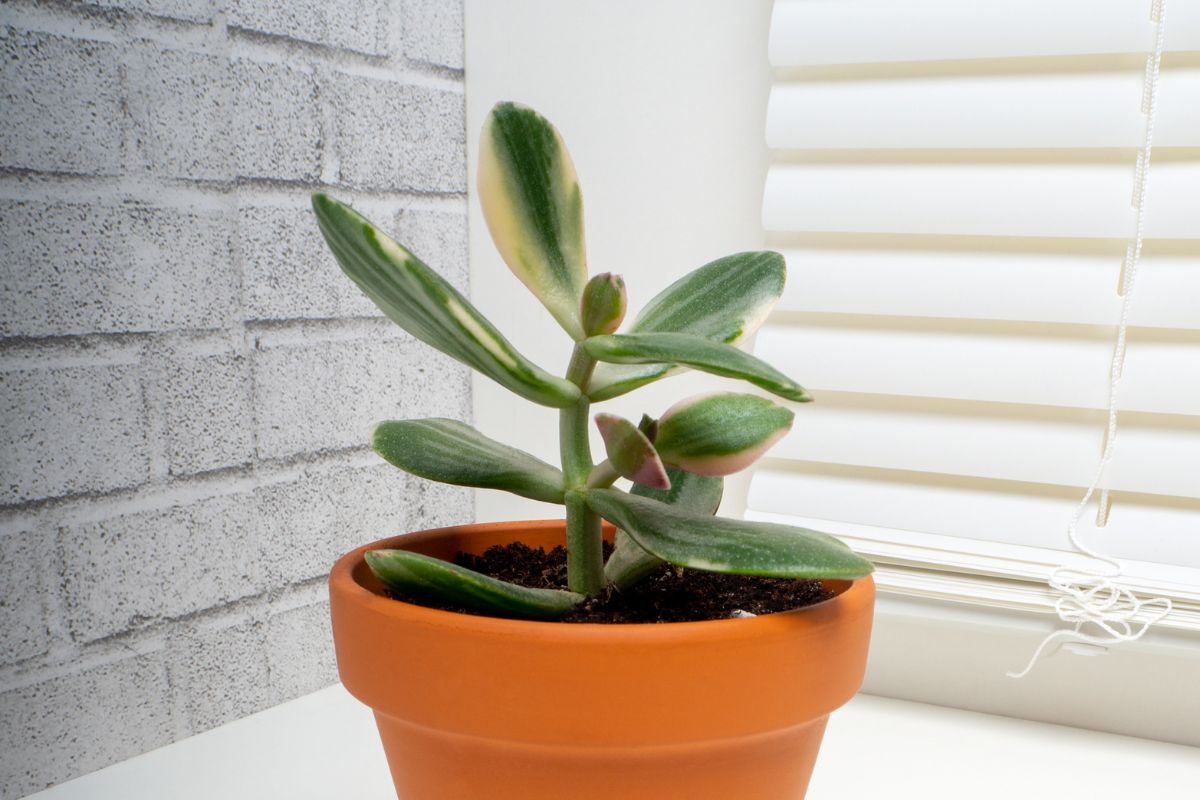
If you want truly unique, this beautiful variety of Crassula succulents deserves consideration. It is a low-growing perennial succulent featuring delicate fragile stems. These stems produce alternate pairs of fleshy, thick foliage.
The leaves are grey-green with cream-colored streaks. These succulent leaves also feature a hint of yellow or pink color.
Blossoming occurs in spring, although it may occur intermittently throughout the year. This plant produces small white blooms.
Variegated foliage makes it a handsome addition to any indoor garden. They thrive in generous natural light but do very well in indirect sunlight and artificial grow lights as well.
4. Campfire (Crassula Capitella)
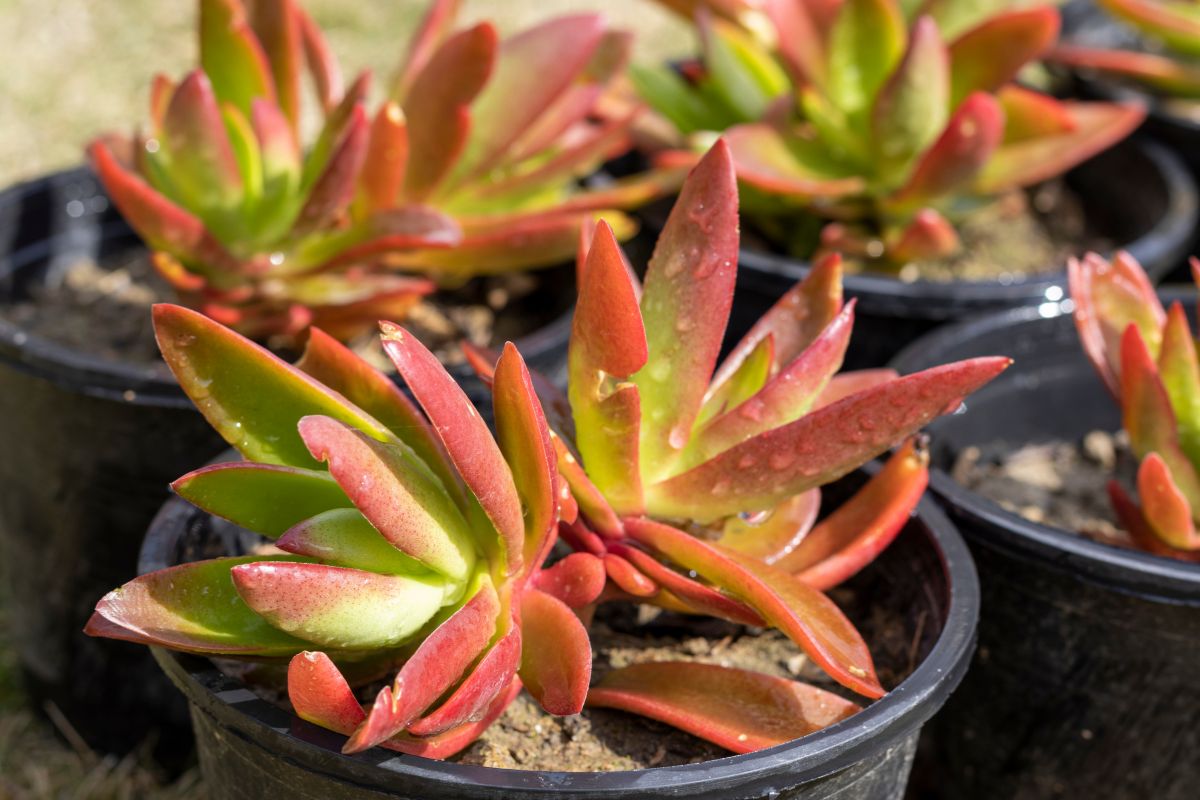
Unique or stunning is the best way to describe the glorious Campfire (Crassula Capitella) jade plant.
It is admired and named for the eye-catching color of its foliage which varies from shades of green to orange. Sometimes a hint of red will appear.
The burst of color typical of this cultivar accounts for its popular name of ‘campfire’.
The Crassula Capitella leaves develop in an attractive rosette pattern. The rosette contributes to their appearance as the succulent version of a colorful flower.
A smallish cultivar among jade plants, it generally will grow to about 6 inches making it ideal as a houseplant or for office décor.
5. Crassula Moon Glow (Crassula Mesembryanthemoides)
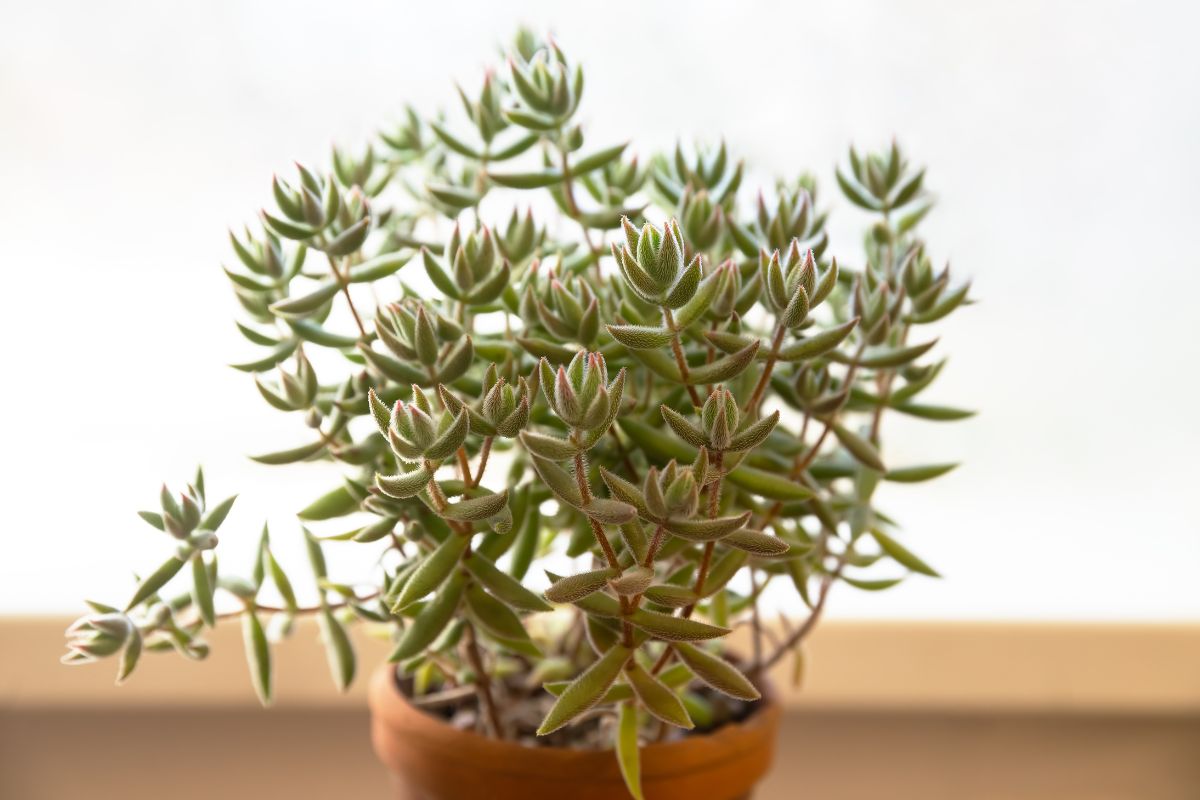
The ‘Moon Glow’ jade plant is a shrub-like succulent that finds its native habitat in South Africa’s Eastern Cape regions. It is recognizable due to its hairy foliage and woody stems.
Leaves will be a brighter shade of green and fleshy. They are covered in a layer of fine white hairs giving them a silvery or frosty appearance. With maturity, stems will turn woody and reddish brown.
The Moon Glow is smallish generally growing to 16 inches in height and width. Leaves are elongated with pointy tips.
This cultivar blooms in the fall and winter months, producing clusters of tiny white bell-shaped blossoms at branch ends.
6. The Curly Jade Plant (Crassula Arborescens Undulatifolia)
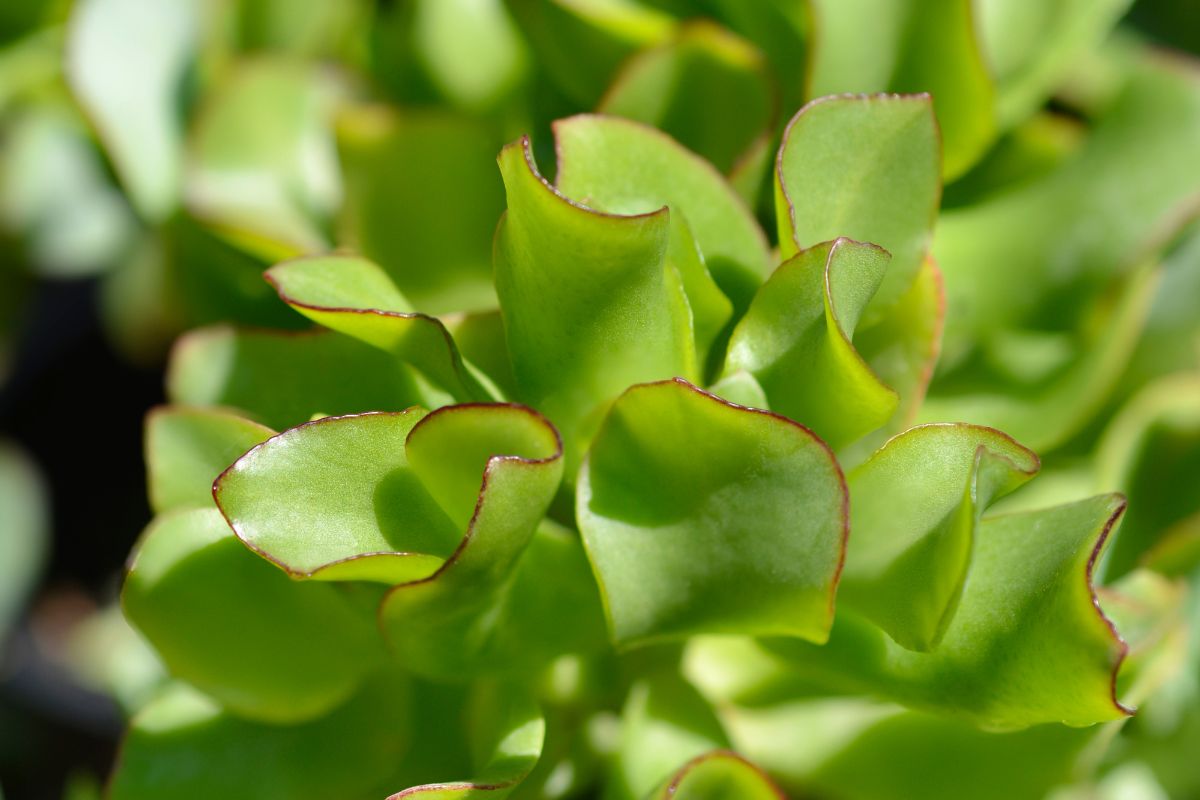
The names curly or ripple jade plant describe the wavy leaves that are characteristic of this jade plant. Wavy bluish-green leaves with reddish edges are the predominant characteristic of this cultivar.
It can grow as high as 4 feet even when cultivated indoors, although it will bloom rarely.
It is native to the southern area of South Africa’s Klein Winterhoek Mountains in the Eastern Cape.
The ‘Ripple’ jade is at home on rocky slopes or cliffs and the bluish color aids in reflecting sunshine on hot days as a cooling system. It offers a moderately rapid growth rate.
7. Garden Coral (Crassula Coccinea)
Also known as the “red crassula”, this is a truly striking jade plant cultivar. Flat growing leaves develop in groups of four only to overlap.
This jade plant blooms in the summer months. Blooming produces bright red, trumpet-shaped blossoms that present an impressive display of color.
It can grow to heights and widths measuring between 8 and 11 inches.
The plant has a shrub-like appearance. It is beautiful when cultivated outdoors in the proper climate conditions.
8. Gollum (Crassula Argentea ‘Gollum’)
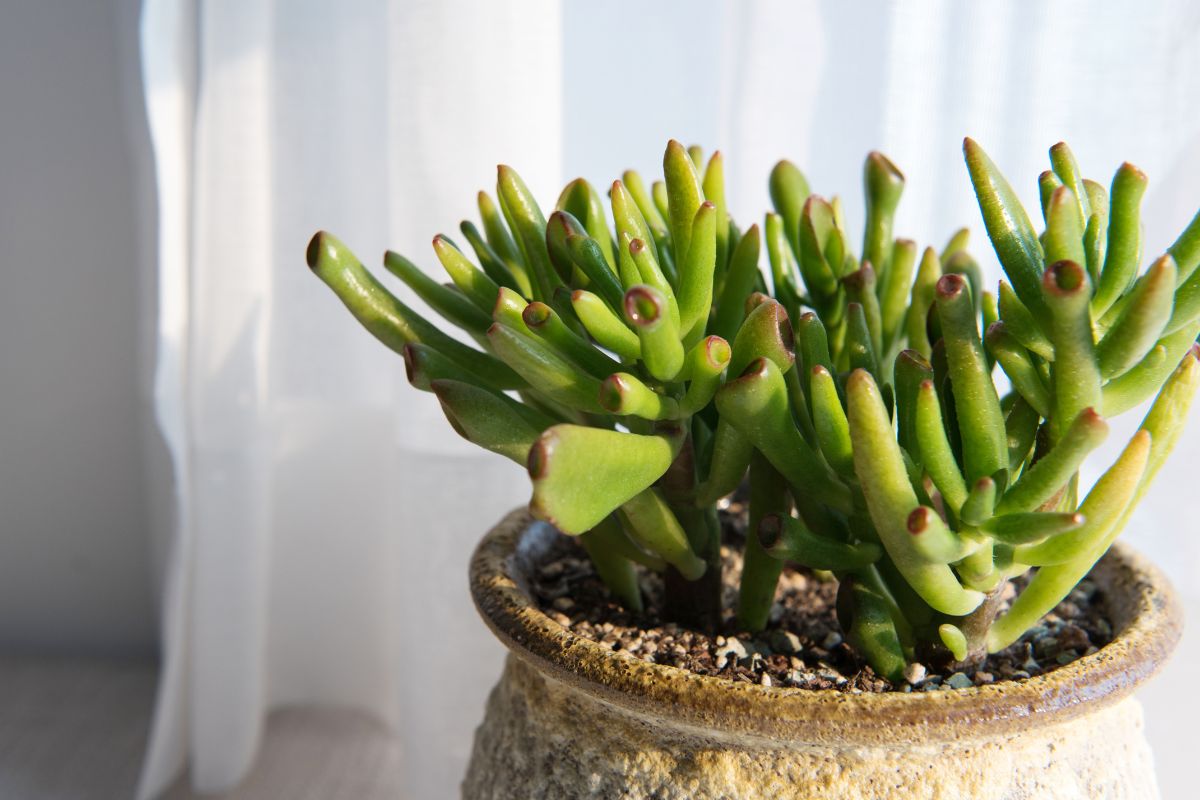
Native to both Mozambique and South Africa, the Gollum is a popular cultivar featuring uncommon tubular foliage. It is said to closely resemble a coral reef.
The leaves are in green color and their unusual tubular shape causes the variegated leaves to appear like a round suction cup. This is due to an indented sucker design.
Leaf tips may develop a reddish tinge only adding to their uniqueness. Due to the plant’s original appearance, it has become popular as a jade plant cultivar alternative.
Should it bloom in the proper environmental conditions, a pink flower or a white flower will grow.
9. Hobbit (Crassula Ovata ‘Hobbit’)
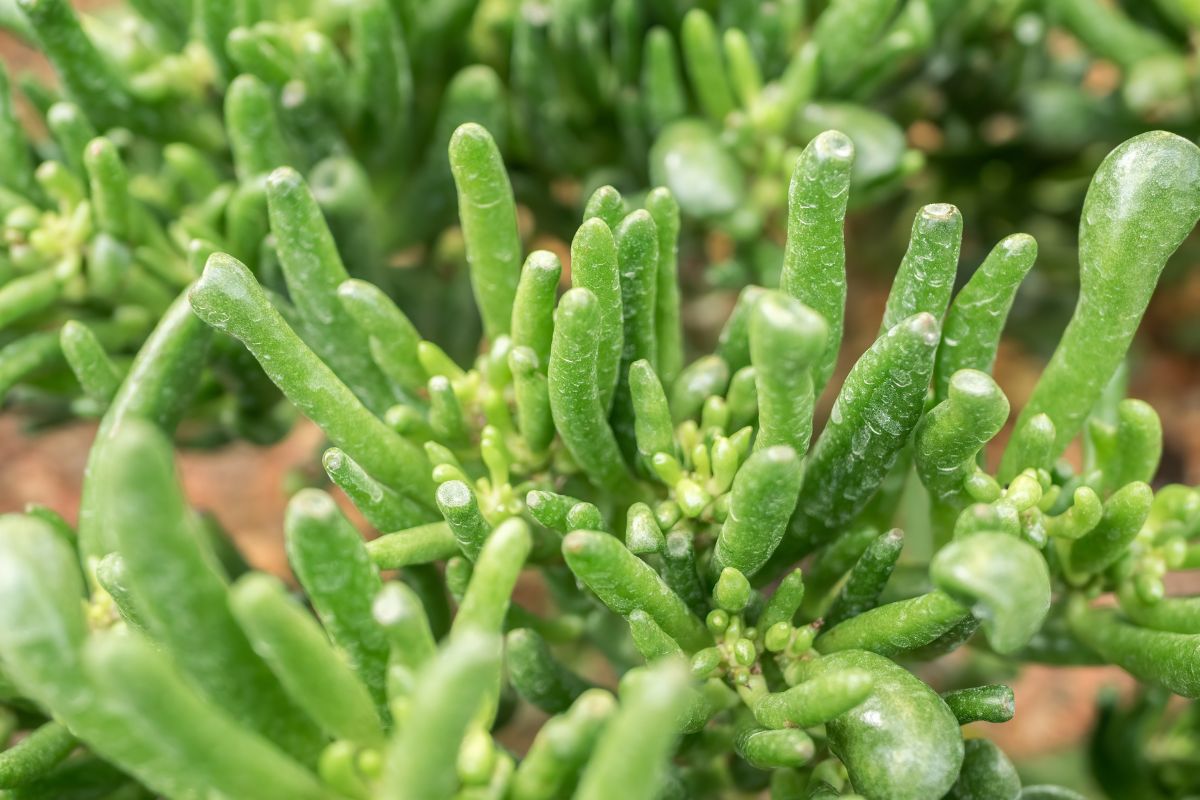
If you are a fan of Tolkien and the Lord of the Rings, this is the jade plant for you. The ‘Hobbit’ is a popular type of succulent plant.
This cultivar boasts long tall leaves that are cylindrical, much like the Gollum. Red rims anoint indented sucker-like leaf tips.
This plant finds its origins in a garden nursery in Victoria, Australia. It is a smallish jade plant that will generally reach almost a foot in height.
Like most jade plants, it will produce pink or white flowers if it blooms.
10. Hummel’s Sunset (Crassula Ovata Hummel’s Sunset)
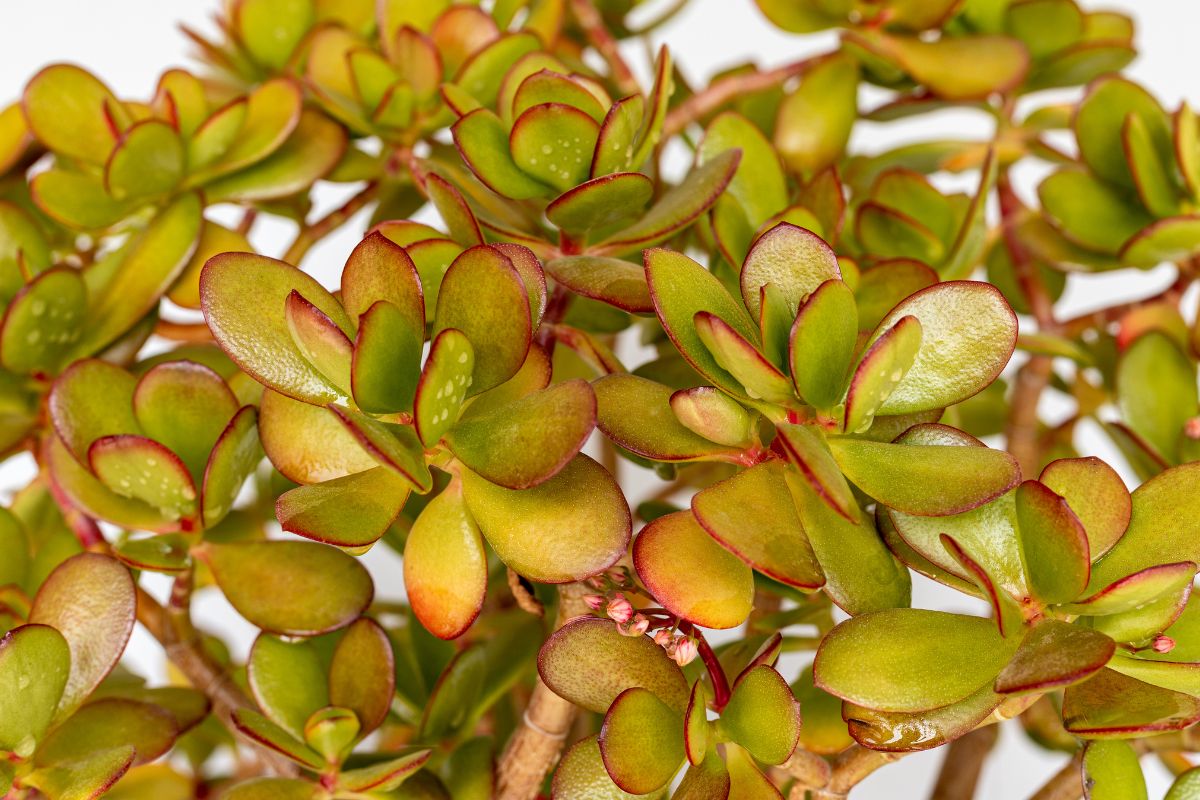
If you’re looking for outdoor jade plants to cultivate, consider Hummel’s Sunset cultivar. It can be grown as an indoor houseplant with equal success.
This colorful jade plant is noteworthy as it is a prize-winning cultivar. The Hummel’s Sunset won the United Kingdom’s Royal Horticultural Society’s Garden Merit Award.
It thrives in moderate climate conditions.
Foliage is oval-shaped and glossy in appearance. It will alter its color throughout the year hence its name.
It begins with green, changes to gold, and finally turns to a passionate shade of red.
11. Jade Necklace (Crassula Marnieriana)
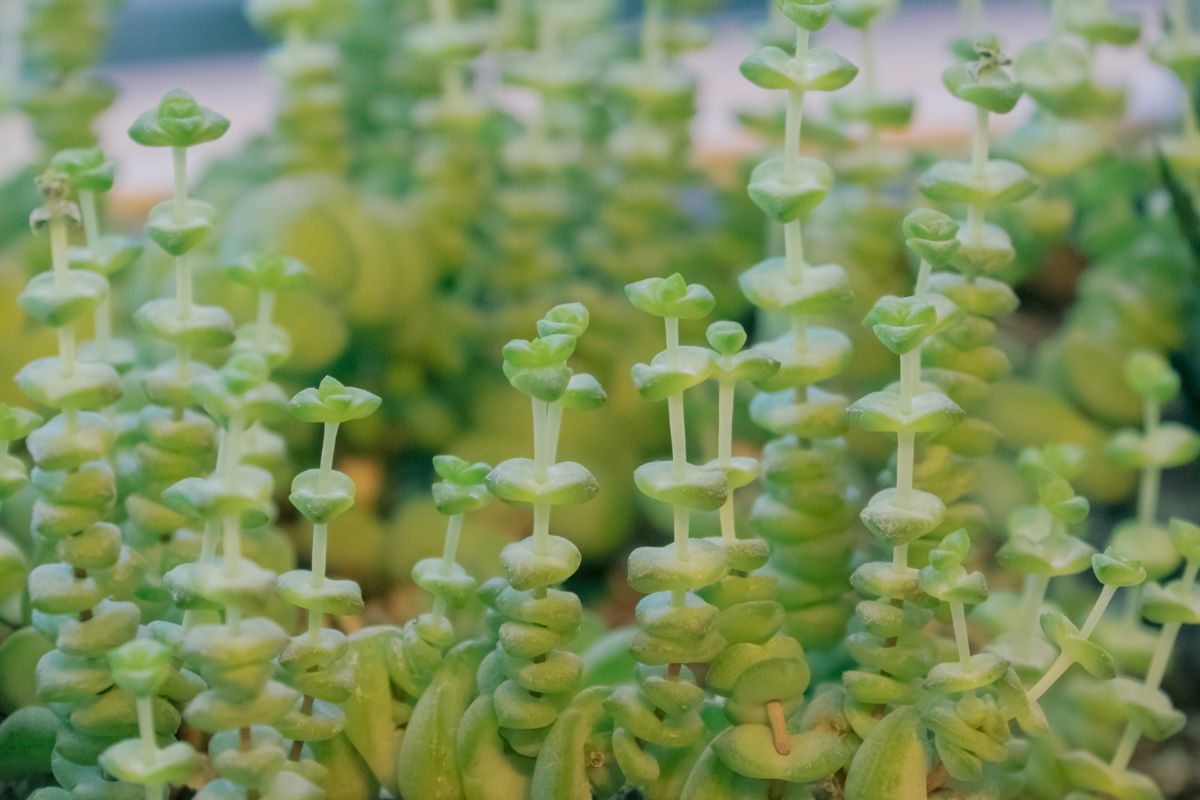
You may find this cultivar under the name of the “Worm Plant”. It grows its foliage in dense clusters that resemble a necklace of jade beads or a ‘worm’. Some varieties of this cultivar feature has leaves with a bit of red edging.
The Crassula Marnieriana is a very slow-growing variety that will eventually reach approximately 8 inches in height.
This particular jade plant is often used to create other hybrid versions such as the Crassula Hottentot or Crassula x Rupertis f. Farnieriana.
This hybrid is realized through the cross-breeding of the Crassula Marnieriana and the Crassula Rupestris.
12. The Miniature Pine Tree (Crassula Tetragona)
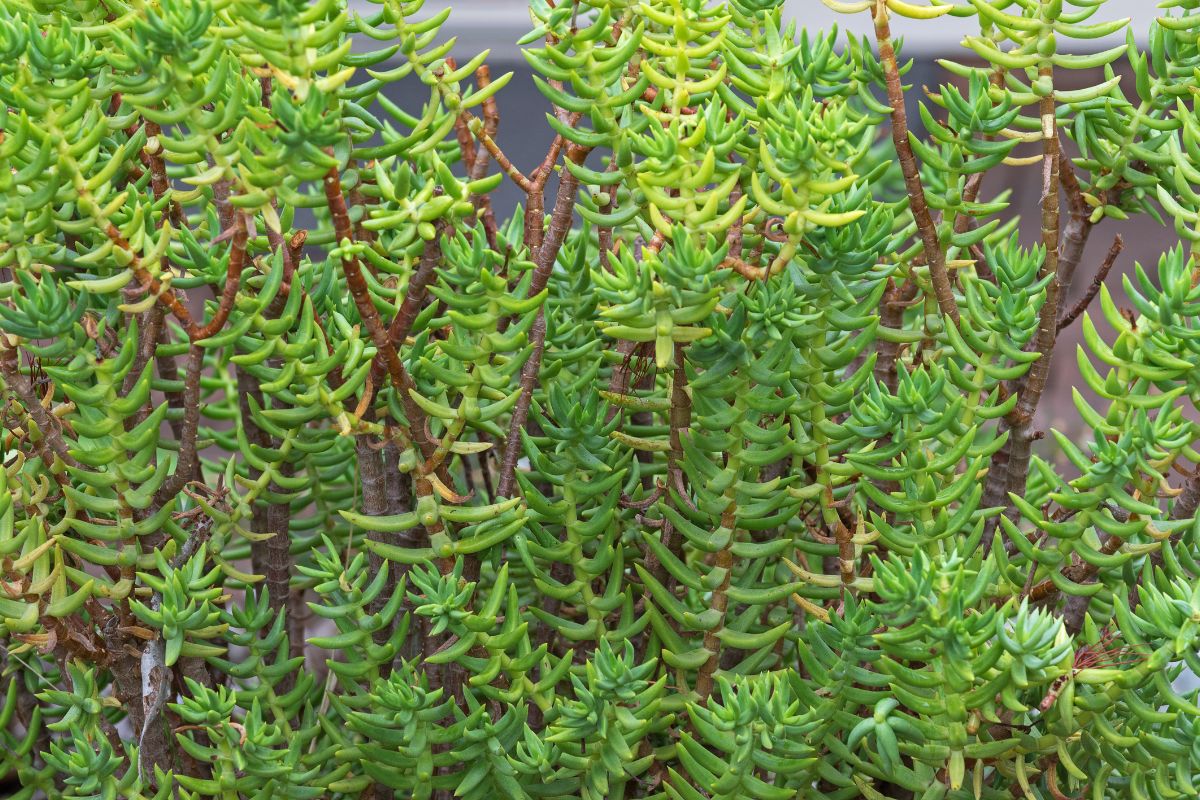
The Crassula Tetragona gets its name from its resemblance to a miniature pine tree. If you’d like a small tree in your indoor garden, you may want to select this jade plant.
Growing from narrow green-hued stems, the plant’s foliage looks like needles.
This smallish succulent can reach a height of 3 to 4 feet.
A native of South Africa, it is a favorite among Bonsai enthusiasts. This jade variety is a popular one to grow bonsai trees with.
When cultivating indoors, occasionally rotate the plant so that your tree develops equally on all sides.
Stems will become darker and harder with maturity.
Blooming occurs in spring and summer producing clusters of petite white flowers.
13. The Propeller Plant (Crassula Falcata)
This propeller jade plant cultivar has the shape of its leaves to thank for its popular name.
Also called the airplane plant, this cultivar has leaves that are long and wide in a unique grey-green hue.
Its flowers are even more original. They do not resemble the more familiar white or pink star-shaped blooms of the Crassula Ovata. They have tiny bright red blooms that produce a blast of color wherever the plant is located.
This jade plant variety will grow to heights of 2 feet and finds its native habitat in South Africa’s Cape of Good Hope.
14. Red Dwarf Jade Plant (Crassula Ovata ‘Crosby’s Red)
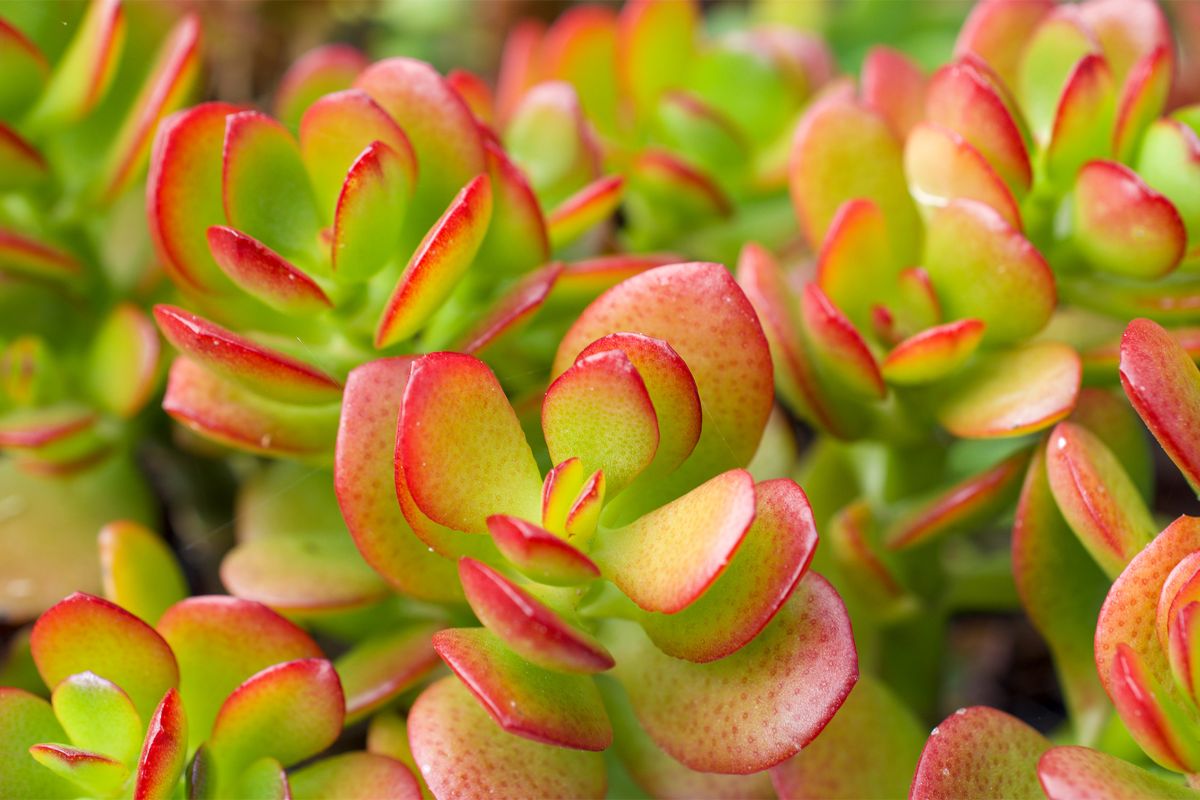
For those who enjoy a bit of contrasting color, this jade plant features light-hued green leaves with red edges. It is a cultivar of the Crassula ovata.
The Red Dwarf jade plant is also known as ‘Crosby’s Compact’ even if it can grow as high as 3 feet.
It flaunts plump, coin-shaped leaves that are similar to the Crassula Ovata.
In some lighting, the center of foliage can also appear yellowish. It is considered a dwarf plant because its foliage is smaller sized than that of its parent plant.
15. Silver Dollar Plant (Crassula Arborescens)
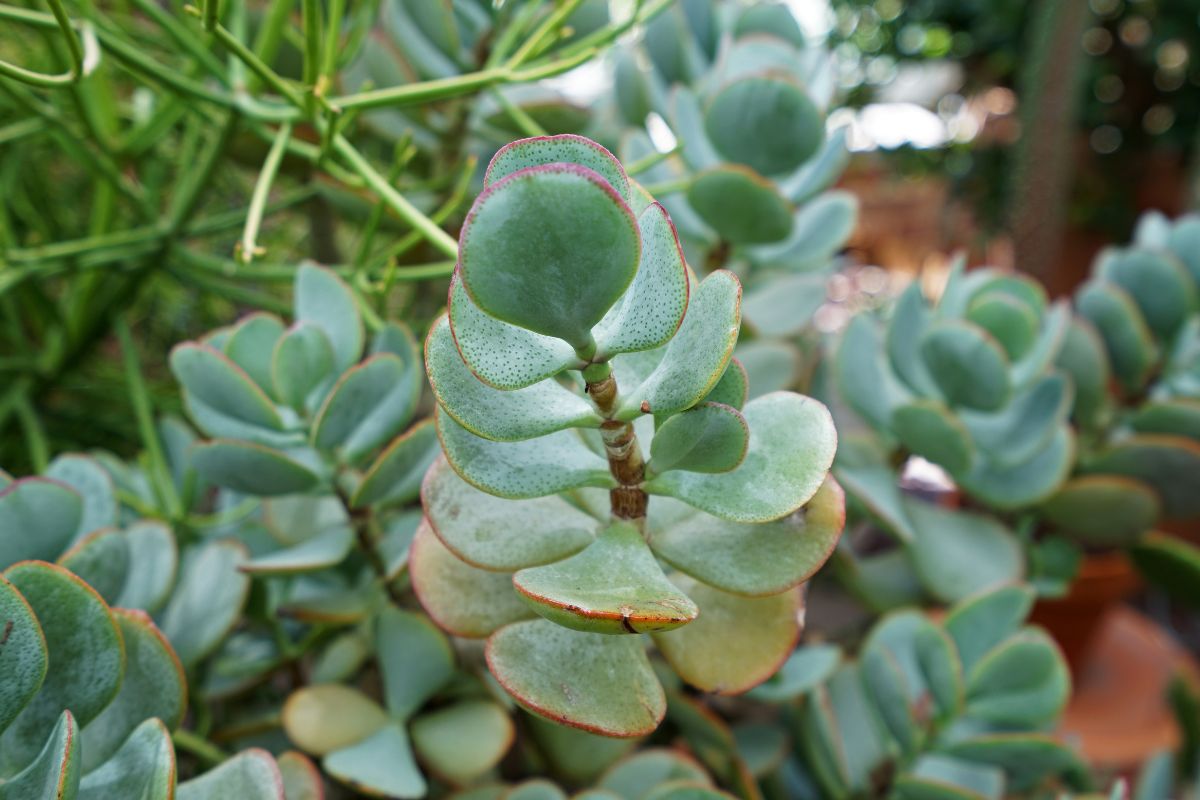
The ‘Silver dollar’ plant or ‘Silver jade’ has an appealing look that makes it a perfect indoor plant. The plant differs radically from the more popular Crassula Ovata.
Native to the Western cape in South Africa, the entire plant can easily grow to 4 feet tall.
The silver jade plant has fan-like leaves growing densely and near to each other providing them with a fuller bushy appearance.
But what distinguishes this cultivar from many others is the bluish hue of its foliage with burgundy edges. It is also referred to as the Blue Buddha Bush.
When blooming in the fall and winter, it produces white or pinkish petite flowers.
The Crassula Arborescens plant performs well indoors or outside when provided with warm and dry conditions.
16. ET’s Fingers Jade (Crassula Ovata ‘Skinny Fingers’)
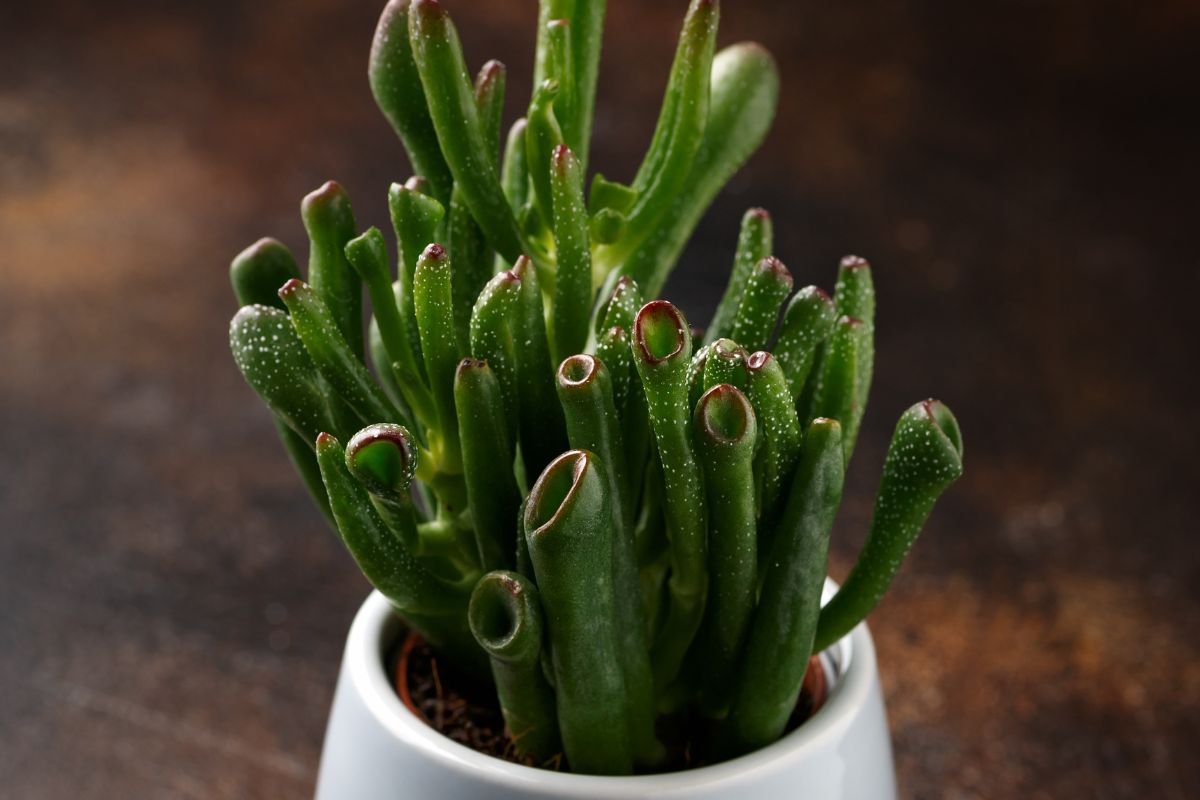
This jade variety is known as ET’s fingers jade plant because of its beautiful leaf tips featuring a red color like the ET film’s most beloved alien.
Long skinny finger-like leaves account for this plant’s other common name as Skinny Fingers.
This ‘fingers’ jade cultivar is similar to the Gollum. It can reach a height of 3 feet and an impressive width of 2 feet.
Star-shaped white and pink blooms will appear during flowering in the spring.
It requires strong bright indirect light to keep those unusually shaped leaves growing and tipped with red.
If you are in the right zone, it makes an interesting addition to outdoor gardens.
17. Tom Thumb (Crassula Rupestris)

This jade plant grows more vertically than other cultivars. It is characterized by clustering, small bright green leaves.
When observed at a distance, these vertical stems are described as resembling a head of wheat.
The Tom Thumb cultivar can show a bit of red on foliage like another crassula.
For those who enjoy cultivating smaller-sized plants, the Tom Thumb merits consideration. It generally will grow to a maximum of 6 inches in both height and width.
This particular variety is a faster-growing jade plant cultivar than others found on this list.
Types of Jade Plants Final Thoughts
There are many types of jade plants available today. They come in different sizes, shapes, colors, and textures. Once you’ve found the right plant for your space, keep it watered and fed regularly. This will ensure its continued growth and beauty.
Learn more about caring for jade plants:


